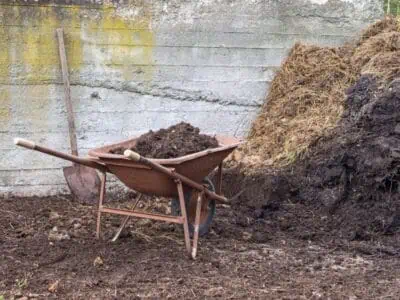Moving vast amounts of soil on earthmoving sites often turns into a logistical headache. Even experienced operators find manual shovelling or wheelbarrow work painfully slow and draining. Traditional methods introduce delays, risks and hidden costs. A soil conveyor belt transforms operations by providing continuous soil movement, easing labour pressures and boosting output. This gear streamlines delivery, handles loads reliably and fits neatly into tight spaces. Understanding why a soil conveyor belt matters—and when it outperforms other equipment—helps site managers make confident, cost-savvy decisions.
What challenges arise when moving soil manually?
Moving soil by hand brings a host of issues:
- Takes significant time and effort to transport soil across distances.
- Involves frequent soil spillage, wasting material and labour.
- Leads to poor ergonomics, risking back strain and fatigue.
- Forces workers into uncomfortable positions on varied terrain.
These issues not only slow progress but also burden crews physically and mentally. On-site, unexpected fatigue might cause delays or errors, while clean-up eats into productive time. Uneven, back-breaking work can escalate into compensable injury claims. These setbacks hit productivity and morale simultaneously.
To address problems like these, teams need more efficient, less physically taxing solutions. Without adaptation, manual soil movement continues to drain both time and energy.
Why do traditional methods slow down earthmoving jobs?
Using wheelbarrows, dump trucks, bulk bags, or front-end loaders introduces built-in inefficiencies:

- Wheelbarrows have a cap load size per trip and require multiple people, stretching schedules.
- Trucks demand loading, travel, unloading, return cycles, and traffic control.
- Bulk bags require precise placement and safe unpacking steps.
- Loaders shifting soil between the stockpile and the dump zone require repeated cycles and setup.
These tasks lead to idle periods. Soil moves in lumps, not flow. Operators pause, crews wait, and equipment sits idle. Traffic issues emerge when trucks and workers share tight pathways. Even after delivery, smooth layering often demands manual rework, wasting crew hours. Productivity stalls when soil movement relies on bursts rather than continuous delivery. No wonder sites drag at value.
How does a soil conveyor belt increase site efficiency?
Switching to a soil conveyor belt solves many problems.
- Enables continuous soil transport, eliminating start–stop cycles.
- Requires fewer workers—just load, monitor and redirect.
- Maintains consistent soil flow, reducing spills and rework.
- Supports modular setups, allowing flexible layouts across the site.
Consider a mid‑sized site needing soil moved 150 m uphill. A conveyor handles that in one setup, with no constant crew movement or repeated machinery positioning. Soil flows steadily, keeping downstream tasks like grading synced. In contrast, trucks deliver uneven bursts, and crews wait for the next delivery window.
Steady soil flow also avoids excessive cleanup, saving lost hours. That means projects wrap up sooner and stay on schedule. Overall, conveyors cut wasted effort, reduce delays and ease coordination pressure.
Here’s a productivity chart comparing methods:
| Method | Labour per m³ | Throughput (m³/hr) | Soil spillage | Setup time |
| Wheelbarrow | High | Low | High | Low |
| Dump truck cycles | Medium | Medium | Medium | Medium |
| Soil conveyor belt | Low | High | Minimal | Low–Medium |
This table makes it plain: conveyors reduce strain on crews and squeeze more value out of site hours.
What makes a soil conveyor belt ideal for confined areas?
Tight sites need compact, adaptable gear:
- Conveyors fold or telescope to fit narrow trenches and tight corridors.
- They operate on steep grades or under overhangs without turning space.
- They run with low emissions and noise—great when diesel access is limited.
- Set-up and teardown are quick and straightforward, perfect for short jobs.
In trench works or residential subdivisions, conveyors slip through gaps a loader or dumper couldn’t. This avoids traffic logjams and site disruptions. Platforming conveyors on tracks or small trucks cuts the need for large turning radii. This lets crews focus on digging and placing soil—not moving heavy vehicles.
Could a soil conveyor belt reduce safety risks on site?
Conveyors align closely with improved site safety:
- They cut heavy manual handling, slashing risk of muscle strains.
- They reduce operator movement around machines, lowering slip and crush incidents.
- They emit less noise and fumes in tight spaces.
- They maintain consistent speed—avoiding unexpected machine movements.

By smoothing soil movement, conveyors generate fewer distractions. Crews stay in designated zones, reducing proximity near rotating wheels or moving material. Consistency also means less fatigue—and fewer accidents late in the day. When it comes to safety culture, consistency beats chaos.
As part of ongoing risk management, teams should invest in conveyor maintenance training competencies to ensure safe, reliable operation and extend belt life.
What long-term benefits come from conveyor use?
Beyond immediate savings, conveyors deliver strategic returns:
- Reduced machine wear: Less diesel consumption than dump trucks.
- Improved crew morale: Less fatigue at day’s end.
- Scalability: Add belts to handle growing volumes.
- Environmental dividends: Lower fuel use and emissions.
These gains compound over time. Once routines shift to conveyors, teams operate smoother, leaner and more sustainably. Sites see daily gains stack into project savings.
Understanding how to choose the right rock conveyor for your soil type, load volume, and terrain helps ensure long-term performance and reduces wear over time.
When is hiring temporary conveyors the right call?
Hiring makes the most sense when site demands are temporary, variable or involve large volumes of soil. It’s a smart move for:
- Projects shifting more than 300 m³ of material, where labour and fuel costs quickly stack up.
- Medium to long-term works that don’t justify equipment purchase.
- Jobs needing quick setup, teardown and reconfiguration across locations.
- Contractors working to fixed budgets who need predictable hire rates.
Hiring also removes long-term ownership responsibilities like maintenance, storage and depreciation. You get access to well-maintained, site-ready equipment without upfront capital outlay.
To review rental rates, explore options for renting conveyors for soil projects and compare them with your current equipment spend—this helps manage budgets and boost productivity.
Final thoughts on soil conveyor belt applications
Bringing in a soil conveyor belt delivers serious gains in time, labour and safety. For any site moving soil regularly—especially in confined areas—it’s worth evaluating.
To weigh your options clearly, you might benefit from getting advice from Conveying & Hoisting Solutions based on your site’s scope, terrain and volume needs.




